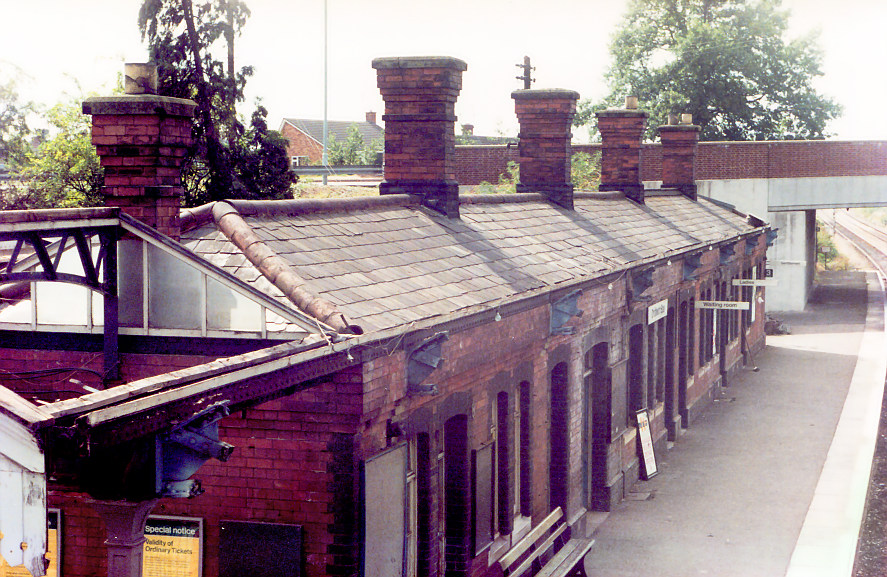
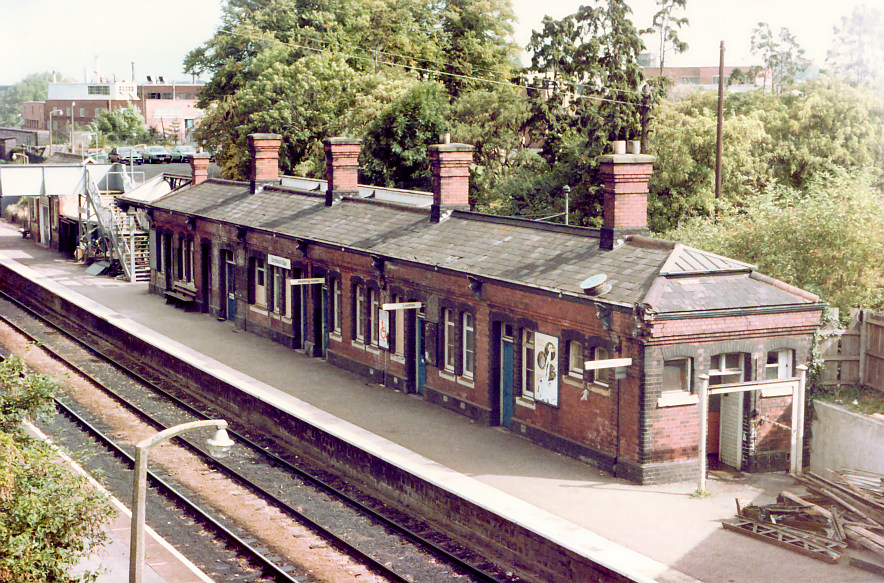
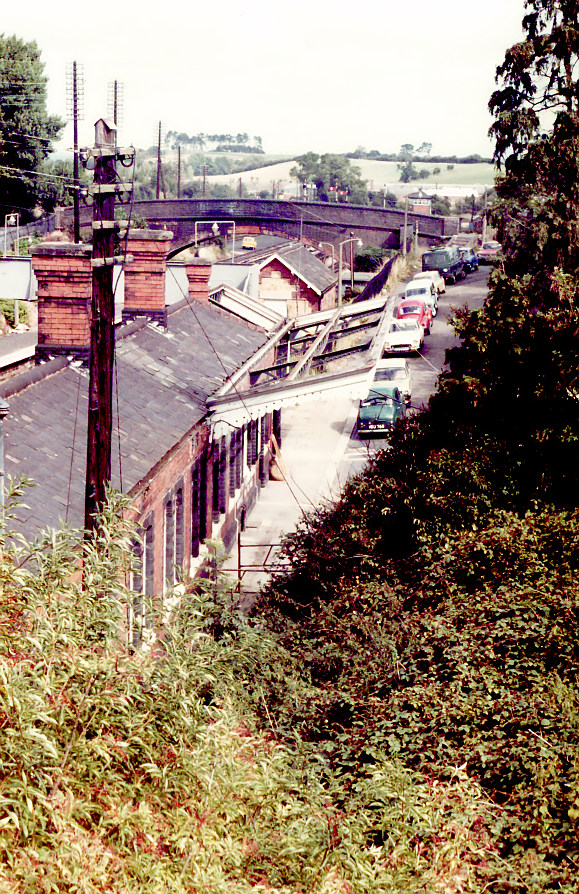

This page contains various railway-related photos. They are mostly a bit crap because they are scanned from 30-year-old prints which have become somewhat faded and discoloured over the intervening years; they are included in the album for their interest value.
These photos are of the old station buildings at Droitwich which were demolished in the early 80s due to being infested with dry rot, and replaced with a crappy characterless brick outhouse. I visited the station to record the old buildings before they vanished, but unfortunately did not do it quite soon enough so the canopy had already been removed.




This is the 0800 service to Worcester approaching Droitwich past the signal box lit by the morning sun, I forget exactly when but probably a few years before the photos above. Happily, the signal box and the semaphores it controls are still there.
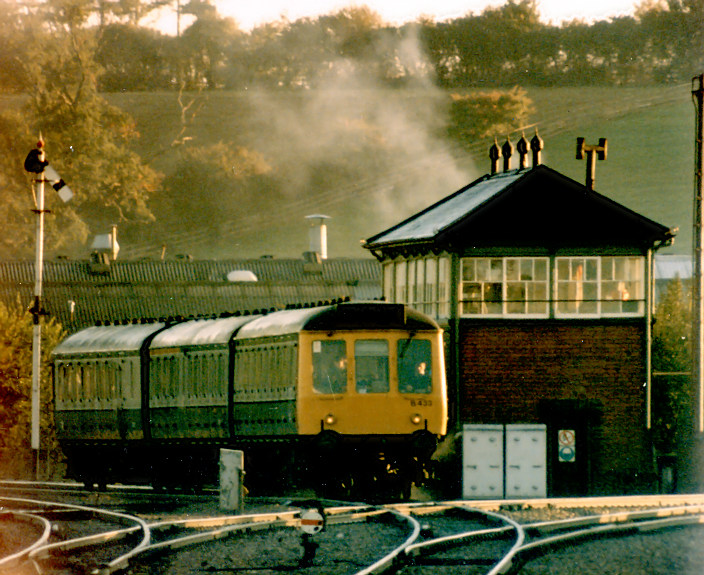
Aside: The junction at Droitwich used to be a triangle, with a line allowing direct passage between the Kidderminster and Bromsgrove lines. I cannot find any textual reference to it anywhere but it seems to have had a very short life - it was constructed in 1847 (unearthing Roman remains in the process) but reference to old maps of the area shows that by 1885 it had already been truncated to a spur from the Bromsgrove line which stopped about half way to the Kidderminster line, and by 1927 the track had gone altogether. It is shown on this 1888 map of the area, labelled "LOOP LINE", and despite subsequent development its course is still evident on aerial photographs (mouse over to highlight).

Worcester Shrub Hill station has an impressive array of interesting semaphore signals. Here are two of the best. Note particularly the route indicator on the single-post signal. If you want to check these out for yourself I advise you to get your arse in gear because they keep making noises about resignalling, and while there still don't seem to be any definite plans to actually do it, there's no telling when it might nevertheless happen.
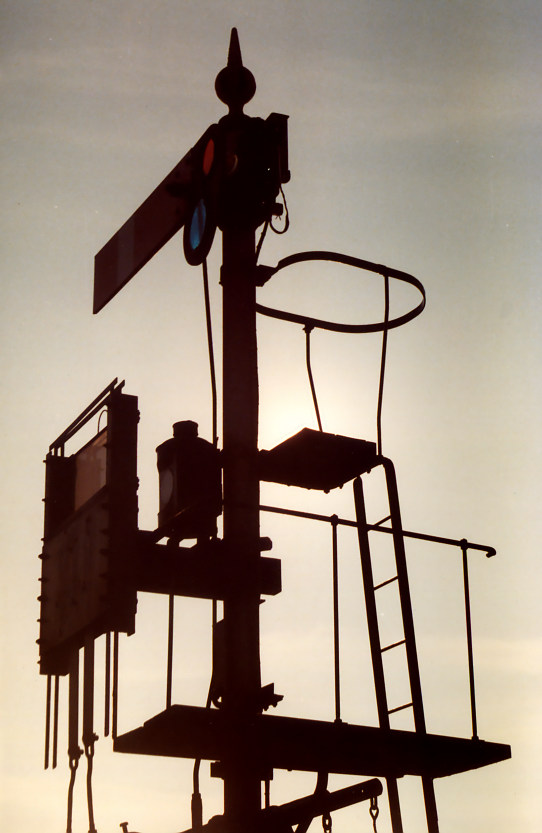
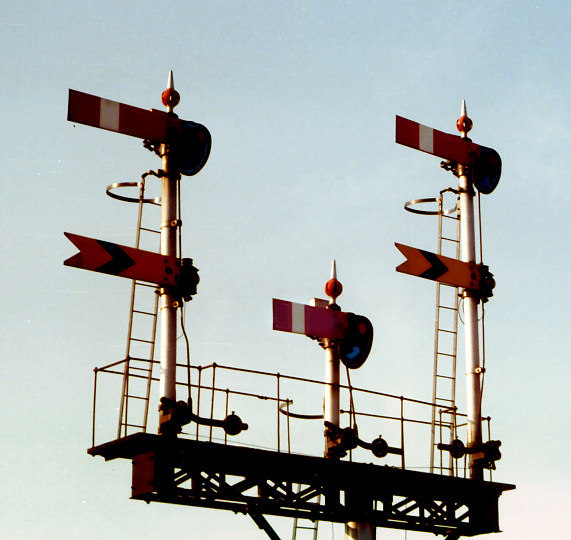
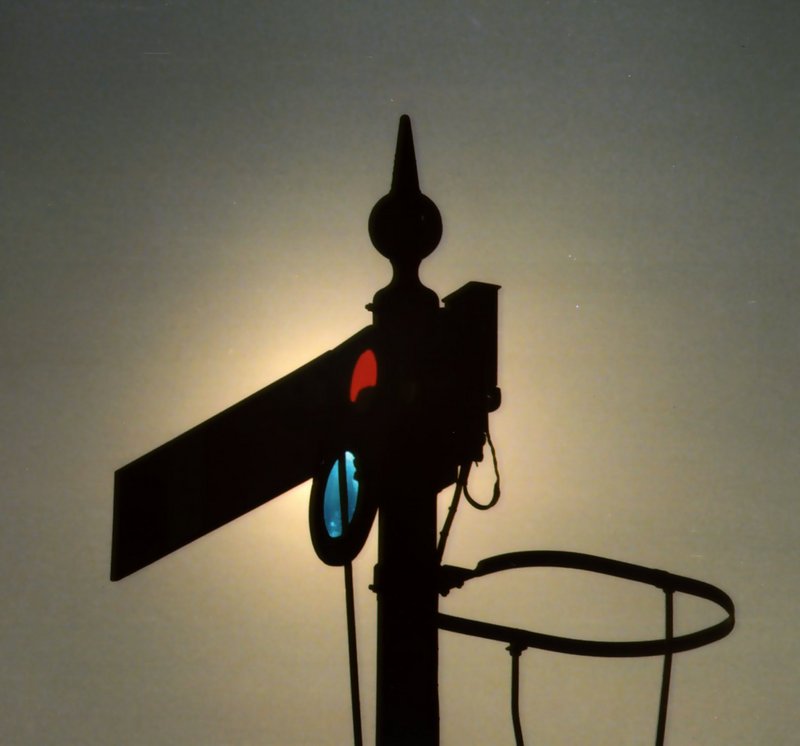
A couple of snaps of the Orient Express Pullman set visiting Worcester hauled by 33046. The first view shows the location of the above signals at the north end of the station. In the second view the old engine shed is visible behind the departing train. This shed has since been demolished, but it had no roof for years and years before that - I am not sure whether it was removed due to deterioration, or simply to let out the exhaust fumes from the first-generation DMUs which they used to leave idling all the time in case they couldn't start the things when they needed them.
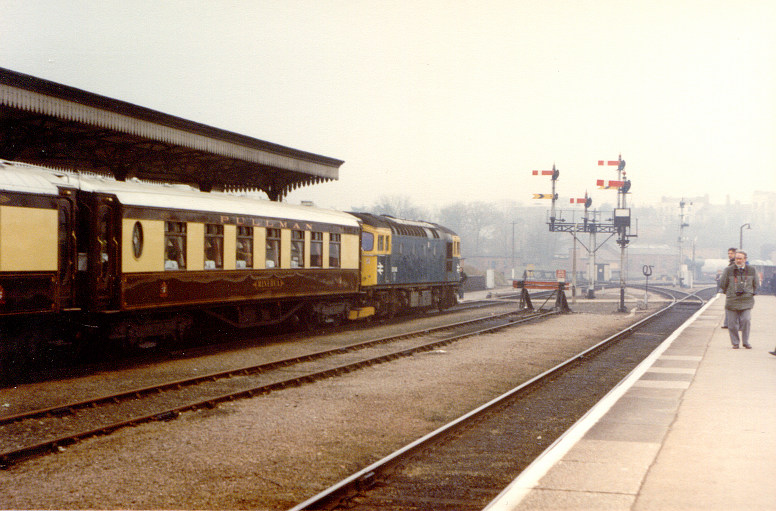
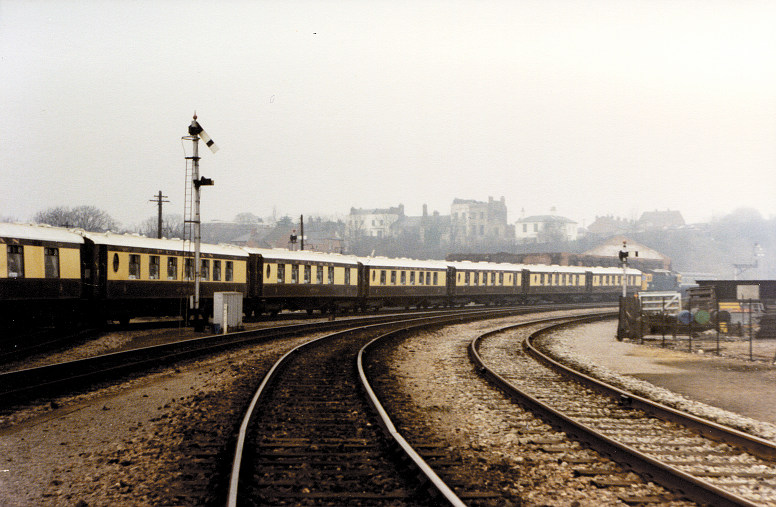
No tremendously interesting reason for posting this photo except that nobody seems to remember these things. It is a Class 123 DMU, one of the "Inter-City" sets built at Swindon Works, seen at Skipton some time around Easter 1983. (No, I don't know which one it was, and you can't read the numbers in the original photo either.) A DMU with corridor end connections! Skipton locals were about the last thing they did; next year they were all gone and the service was worked by ordinary boring DMUs like you got everywhere. The photo does not make clear just how manky the platform surface really was; flagstones are great in themselves, but no two of these were at the same angle, nor did any of them match the adjacent ones for level. These days it has been "done up" in the usual crappy way that does as much down as up; instead of levelling the base and re-laying the flagstones in a proper flat manner, they just blurged tarmac all over everything, so while it is now flat and level it is also boring and crap and has lost all the platforms' character.

Sadly I never saw any of the hydraulics in service. The only photos I have of them are this of a somewhat sorry-looking D1015 Western Champion behind the A shop at Swindon Works early in 1985...
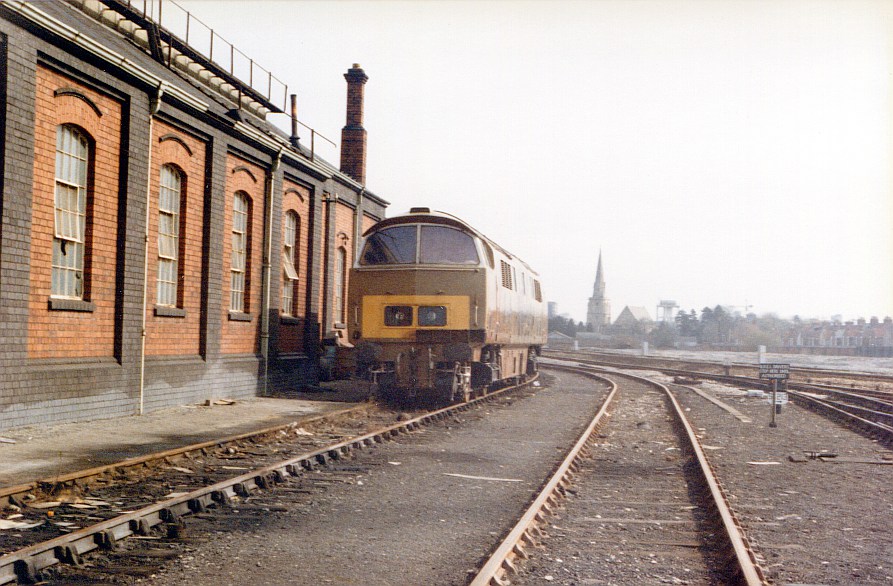
...and this of D818 Glory slowly peeling at Swindon Works also in 1985.

For anyone wishing to study the history of the hydraulics I would most heartily recommend The Western's Hydraulics by JK Lewis, an extremely thorough work which not only covers each of the hydraulic classes in detail, with an additional chapter on the service record of related designs in Germany, the US and elsewhere, but also the political and operational background to their procurement, service and withdrawal. This book is a model of what a history of locomotives should be, and it is outrageous that it should be out of print. Copies can still be found, though; here is the Amazon listing for The Western's Hydraulics (the link is valid at the time of writing; should it fail in future simply use Amazon's search function).
This photo is taken with a 600mm lens out of the front of a DMU which had just emerged from Worcester Tunnel. The perspective compression from the long lens emphasises the changes in gradient and shows the contrast between the great degree of vertical curvature and the complete lack of lateral curvature on this stretch of track. In the distance is the overbridge where the A38 crosses the line at Fernhill Heath.
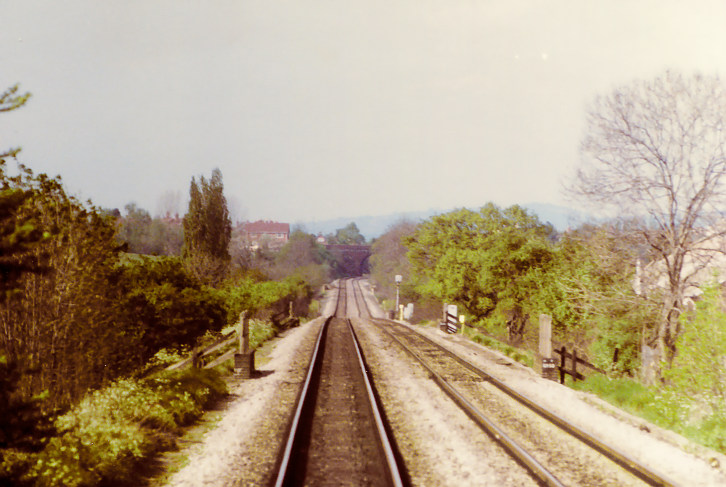
This is one of my friends who lives at Shrub Hill.
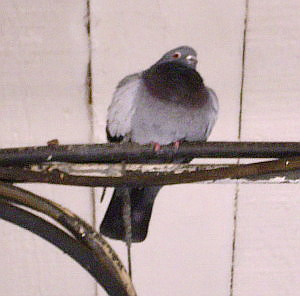
Back to photo album
Back to Pigeon's Nest
Be kind to pigeons